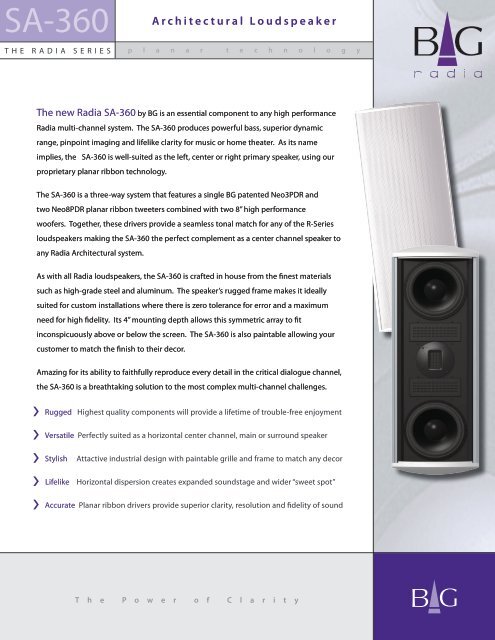

For instance, if you're playing a signal that's 10khz, "a timely fashion" would be 1/10,000th of a second, or 0.1ms. I think that timeframe is defined by frequency. Next up, we have to figure out what is "a timely fashion." IE, if my radiator is playing a signal, I want it to play that signal then return to it's original state. I think that ideally we would want a radiator that plays the signal, and then returns to it's starting point in a timely fashion. There's a way to prove this mathematically:įirst off, we have to ask ourselves, "what do we want in the time domain?" How well do they work "boxed" compared to conventional drivers? Also, while the frequency response looks usable, do they suffer from sympathetic resonance compared to conventional drivers?Īgreed.
BG RADIA NEO3W DRIVERS
I'd also be looking at trying these drivers in their own enclosures instead of open baffle. I read Linkwitz's article on sine burst testing with the Neo3 but it appeared that it wouldn't apply to the Neo3 crossed over at a higher frequency.

I'm not sure about thermal compression though. I've seen Zaph's measurements on the Neo3's and Neo10's so I know they have low distortion and good frequency response. I'm wondering how the Radia drivers compare to conventional cone and dome mids and tweeters, and also the HiVi planars. I've heard Magnepan's but those are so different in concept I'm not sure if they're really comparable. I've never heard any of these planar drivers before. Since it looks like Radia's Neo drivers are not going to be offered to us diy'ers any more, I'm starting to think I should pick up a pair of Neo3's and Neo8's or 10's before it's too late.


 0 kommentar(er)
0 kommentar(er)
